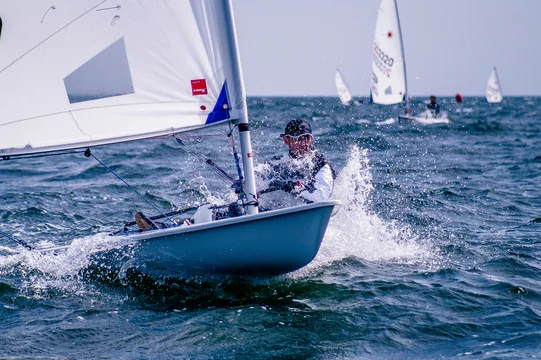Sailing is one of those endeavors that really make you respect the ancestors. As a kid (and indeed, a thirty-something) it seemed like a simple matter or pointing a sheet in the wind to go forward. Then you actually go on one of these crazy things and—even setting aside the knots—there's this mad calculus that goes into what turns where when that somehow makes you best off when you're perpendicular to the actual wind. Real witchcraft.

This, of course, brings us to one of my favorite areas of patent law, the safe harbor provision. For those, less familiar, Judge Barker's opinion this week in Merus N.V. v. Xencor, Inc., C.A. No. 24-913-JCB, D.I. 35 (D. Del. Sep. 30, 2025), gives a good overview.
Briefly, 35 U.S.C. § 271(e)(1) allows one to make/use/etc, a patented invention "solely for uses reasonably related to the development and submission of information under" a qualifying regulatory regime. This most often comes into play in the ANDA context where the generic manufacturer can use the otherwise patented drug to perform the necessary studies to submit their ANDA to the FDA.
The situation is somewhat more complicated in Merus. The patents there dealt with technologies a bit earlier in the pipeline than a finished drug, addressing various systems for creating specific antigens for biologic therapies. The defendant moved to dismiss on the grounds that all of their uses of the technology qualified for safe harbor because they were designed to lead to information that could be submitted to the FDA. Plaintiff, on the other hand, argued that the defendants uses were merely experimental, designed to identify potential targets for further research, and were thus too attenuated from any FDA submission.
Judge Barker granted the motion to dismiss, finding that the safe harbor provision covered these uses, given the specific claim language at issue:
Plaintiff argues that defendant has yet to “identify a multi-specific antibody for further study” and infringes the ’286 patent to “streamline [defendant’s] creation of previously unknown multispecific antibodies for potential further study.” For the reasons discussed above, that argument is unavailing. Trial and error to discover products appropriate for placing into the FDA approval process is protected activity under the safe harbor.
Id. at 16.
If you enjoyed this post, consider subscribing to receive free e-mail updates about new posts.

